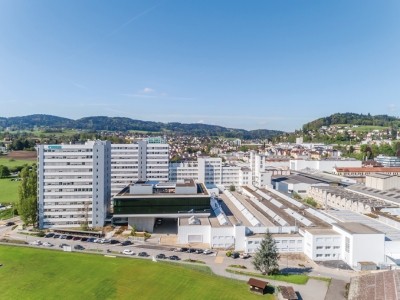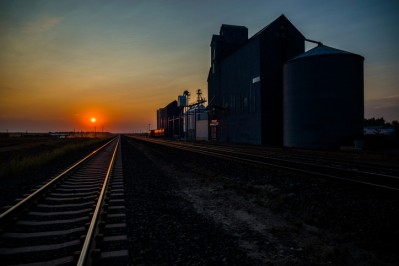Bühler invests in feed education

The new Bühler Lecturer in feed technology position at Iowa State was announced last month and brings a host of new responsibilities for Sam Cook. Before being selected to fill the new role, after a national search, he had been a post-harvest engineer and feed technologist working in the department of agricultural and bio-systems engineering at Iowa State.
The position was publically posted and open to applicants, said Cook of being picked for the new spot.
“I hope it’s long-term,” he told FeedNavigator. “Right now, it’s a three-year funded position and will then be under review.”
The interest in supporting a faculty position was part of an effort to invest in the future of the US feed industry, said Bühler of the gift.
Rene Steiner, president of Bühler North America, commenting on the initiative, said: “We look forward to collaborating with Iowa State in the future to offer feed manufacturing and feed safety short courses that help industry professionals obtain the continuing education they need.”
Feed focused responsibilities
Among the responsibilities included in the new position will be work helping to design a new minor in feed technology to be offered at Iowa State, designing and offering professional development courses for current industry members and teaching, said Cook.
He will be spending time in the classroom working with students in a recently designed course on feed processing and technology and running laboratory sections of a grain preservation course, he said. “That goes into a new academic minor in feed technology and that will be for educating a new generation of talent,” he added.
The minor is still being established, he said. One course in feed processing and technology is being offered and a second dedicated to feed safety is set to be taught in the spring.
“It’s kind of a challenge, we have students who come from farm background who may have mixed feed before, or interned in feed and flour mills, or come from no background at all,” said Cook. “We talk about why we feed, and ingredients, and relevant regulations in feed safety, and what makes quality feed and the unit operations.”
His training efforts also cover areas like ingredient storage, batch mixing, grinding and pelleting of feed along with some of the engineering principles involved and the effect that end products have on animal performance, he said.
“I love it,” he said. “I’ve been in front of a classroom a lot, but having the freedom to design a curriculum and lecture schedule and present material from square one – it’s rewarding.”
Cook also is part of an ongoing project to raise funds for a new $21m feed mill facility and a member of the team working on facility planning, he said. When completed, the mill will be, in part, for use of students in the newly designed minor.
His teaching responsibilities also include establishing professional learning courses for industry members, he said. “We have two short courses for grain elevator managers and feed milling to be offered after the first of the year,” he added.
“There is new technology on the software side of running a plant and that will be new, for FSMA [there is] new regulation on the feed side as the regulations are rolled out and the guidance is implemented,” he said. “The industry really is in a phase where the current workers are aging out and retiring and a lot of the new people come from backgrounds that aren’t grain-related or agriculture-related so the issues will be new.”
Other feed sector focuses
The sector faces several areas of change and challenges at the moment, said Cook. Automation is an increasing topic of interest as is the work being done to address the Food Safety Modernization Act (FSMA) and work to integrate safety practices and technology, he said.
The interaction between the internet of things, remote sensors, automation, grain traceability and documentation also is a process that is still being established, he said.
Looking at feed and food safety there also are questions regarding bio-security and antibiotic resistance issues, he said. “We saw scares with avian flu and PEDv, and I think there’s a lot of research and questions that can be addressed,” he added.















